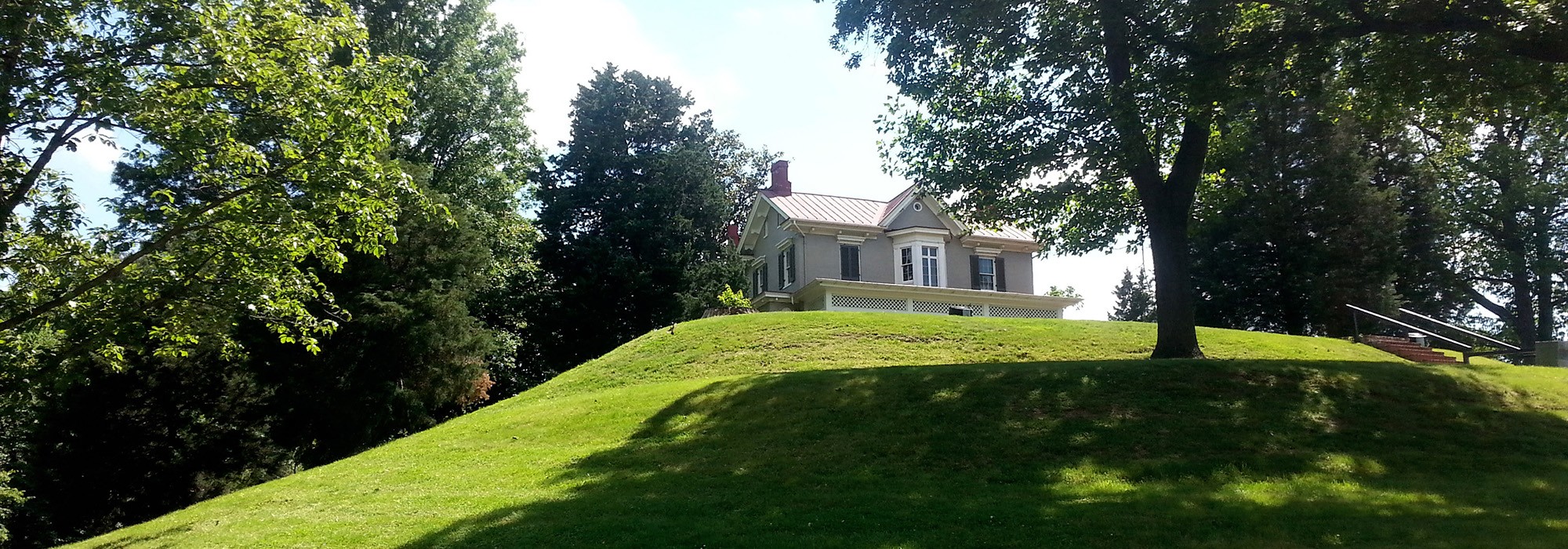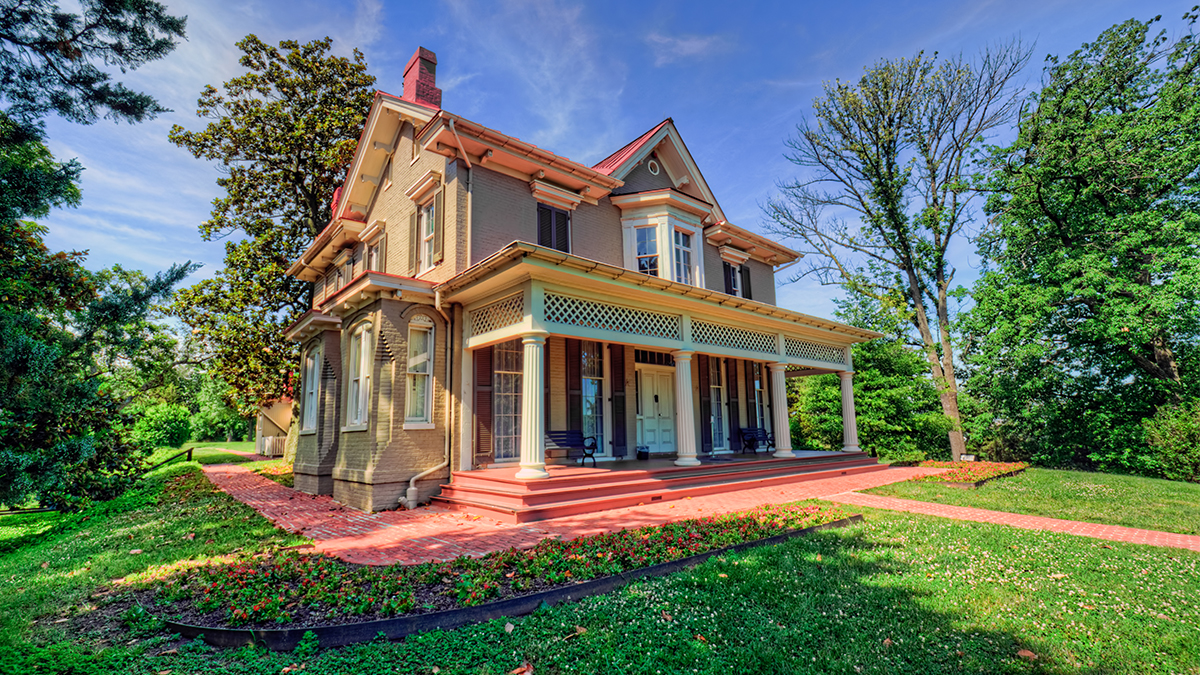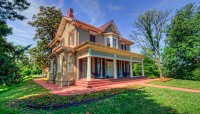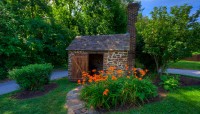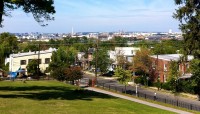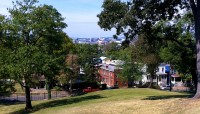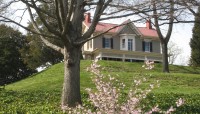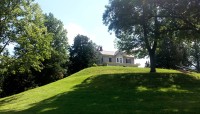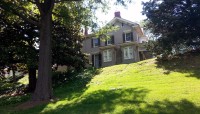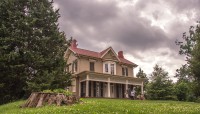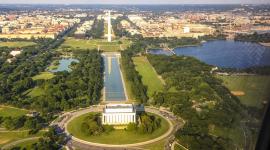Landscape Information
Located two miles east of the confluence of the Anacostia and Potomac Rivers, this approximately eight-and-a-half-acre site features a Greek Revival and Italianate-style residence established in the 1850s and acquired by Frederick Douglass in 1877. The structure is set atop a prominent terraced knoll that rises about 60 feet above the surrounding residential neighborhood. Named Cedar Hill by Douglass, the estate served as a private retreat, where Douglass could entertain and connect with nature. Douglass transformed the property into an ornamental farm, featuring productive vegetable gardens and an orchard. He also built outbuildings, including a small stone structure known as the “growlery,” used as a study. A network of picturesque paths provided connectivity.
In 1894 a curvilinear entry drive was reconfigured to accommodate access from the northwest corner. Demarcated by brick pillars, the drive parallels W Street SW before curving to ascend the hill west of the home. South of the residence, the drive passes the growlery (reconstructed in 1981), where it abandons its nineteenth-century alignment, terminating at a circular drive. North and east of the residence linear brick stairways, true to their original alignments rise to a summit and meet the residence whose northern façade and front porch afford panoramic views. The knoll is dominated by lawn and crowned with numerous specimen trees, including oak, hickory, and cedar. East of the residence are two magnolia trees, which date to the late nineteenth century.
The site’s historic preservation history is also noteworthy: In 1900, five years after Douglass’ death, Congress chartered a nonprofit group to preserve his legacy. The group acquired the property in 1903, rehabilitated the residence with the National Association of Colored Women in 1918, and rehabilitated the grounds in 1938 with the National Youth Administration. The property was designated a National Park by President Kennedy in 1962, listed in the National Register of Historic Places in 1966, recognized as a contributing feature of the Anacostia Historic District in 1978, and re-designated as a National Historic Site by Congress in 1988.



